Pizza Express has a big slice of the retail market but its success is proving hard for shareholders to swallow. Sales of its pizzas in Sainsbury have grown to 140,000 a week - well up on the chain’s original estimates of just 40,000 - but it has not done the brand any favours, according to some industry observers. Although supermarket sales are healthy, profits are below expectations and shares have slumped to 282p, the lowest level in six years. Despite this, Pizza Express is forging ahead with the retail venture and has just launched the products into Waitrose.
Chief executive David Page is keen on the retail offer, which kicked off five years ago with its salad dressing, and thinks there could come a day when as many pizzas are sold in store as in the restaurants. He says 50% of consumers buying the retail product haven’t visited a Pizza Express and adds: “We think it will encourage them to come into the restaurants.”
Other foodservice chains are also venturing onto supermarket shelves - look at Starbucks with its frappés, and the posh Bombay Brasserie Indian restaurant chain in the capital which sells its takeaway meals in Sainsbury.
Only this week, Italian restaurant chain Bella Pasta launched into stores with the flavoured oil which is available on its table tops, “following a demand from customers who want to enjoy the authentic Italian restaurant experience in their own home”.
So should these companies take precautions to ensure shop sales do not harm their image? Nighat Awan, owner of north-west 10-strong restaurant chain Shere Khan, does not think there’s a danger of shooting herself in the foot. She’s just extended her retail range of accompaniments and sauces based on recipes served in the restaurant and aims to create the dining out experience in store.
She reckons changing the menu while introducing new retail products keeps both offers fresh and brings in new diners and shoppers.
Retail sales are growing rapidly and Awan expects these to eventually overtake the restaurants: “People like to swap the experience and try to recreate meals they eat in restaurants.”
But Steve Brown, MD of the What Matters consultancy, says there are other risks involved. Because you are usually selling at a 30-40% reduction in store, you need a strong brand equity to justify the extra cost back in your restaurant. “Pizza Express has done it successfully... if you put Domino’s pizzas in Sainsbury, people would not need to order them as takeaways.”
If you flip the concept you find a history of retail brands heading into foodservice. Sit down for a deep pan at Pizza Hut and you’re offered Coke. Eat in a pub restaurant and you will find Cadbury’s ice cream toppings on the menu.
Caterers use these brands as a kind of shorthand for their style or aspiration - especially in new restaurants.
Cadbury’s, Geest, Heinz, Hellmann’s, HP, Sara Lee, Weetabix, Kellogg’s, Coke, Pepsi, Abbeywell, and Campbell’s are all already on this particular bandwagon and no doubt even more manufacturers will follow their lead.
It is partly due to the fact that the retail market is so tough that manufacturers reckon foodservice has more potential. Sticking their brand in front of people eating out gives it welcome exposure, encourages take up and could mean that these diners turn shoppers and buy the brand in stores.
And caterers believe famous names can encourage shoppers to use their restaurant, improve the quality of the offer (or at least the perception of that quality) and create a point of difference, particularly in fast food joints. McDonald’s even realised that selling Coke had more value than its own no-name cola - vindication indeed.
Alistair Price, business development manager at foodservice consultant FusionFSM, advises: “Any supplier worth their salt should focus on developing this area.”
Manufacturers say sales of the product increase when a branded alternative is put in and Nescafé, for example, reckons that 86% of consumers prefer a branded coffee machine and that this also increases loyalty. But will restaurants soon find themselves swamped by all these brand names?
Price acknowledges that you can have too many on a menu. One hotel group discovered this to its cost after name-checking a raft of products from Weetabix at breakfast to Sara Lee cakes on the dessert trolley. “It looked a mess,” says Price, “and they had to scale it back.”
Tony Horton, from Foodservice Consultants Society International, believes consumers can get muddled by the message and question why caterers have to use a lot of brands. And he adds that brands don’t always impress customers, while quality by any name will.
It is a trend that looks likely to become more widespread before it settles to a practical level and, in the meantime, manufacturers might have to watch that they have not got an offer along with a number of others that is the catering equivalent of a 3ft of space competing with someone else’s 3ft.
A product can get put on a menu for up to a year - which is great for the manufacturer, but it means caterers are also taking a risk. Once a brand’s on your corporate menu and in hundreds of outlets, you hope nothing untoward will happen to the company or its reputation be damaged. Those restaurants with Perrier branded on the menu were in exactly that position a few years ago. The unfounded scare surrounding Benzene in the fizzy water meant many outlets had to put a fly sheet into the menu explaining why they were substituting the product.
This, says Horton, indicates how a warm and cuddly partnership can backfire. And he adds that there are problems for manufacturers, who can exercise less influence on the way their brands are executed in restaurants. “If you are supplying speciality coffee but not running the process, the operator can mess it up and put you off the product. It could even mean shoppers would be less inclined to buy the product in store.”
Now that’s something that leaves a bad taste in the mouth.
Chief executive David Page is keen on the retail offer, which kicked off five years ago with its salad dressing, and thinks there could come a day when as many pizzas are sold in store as in the restaurants. He says 50% of consumers buying the retail product haven’t visited a Pizza Express and adds: “We think it will encourage them to come into the restaurants.”
Other foodservice chains are also venturing onto supermarket shelves - look at Starbucks with its frappés, and the posh Bombay Brasserie Indian restaurant chain in the capital which sells its takeaway meals in Sainsbury.
Only this week, Italian restaurant chain Bella Pasta launched into stores with the flavoured oil which is available on its table tops, “following a demand from customers who want to enjoy the authentic Italian restaurant experience in their own home”.
So should these companies take precautions to ensure shop sales do not harm their image? Nighat Awan, owner of north-west 10-strong restaurant chain Shere Khan, does not think there’s a danger of shooting herself in the foot. She’s just extended her retail range of accompaniments and sauces based on recipes served in the restaurant and aims to create the dining out experience in store.
She reckons changing the menu while introducing new retail products keeps both offers fresh and brings in new diners and shoppers.
Retail sales are growing rapidly and Awan expects these to eventually overtake the restaurants: “People like to swap the experience and try to recreate meals they eat in restaurants.”
But Steve Brown, MD of the What Matters consultancy, says there are other risks involved. Because you are usually selling at a 30-40% reduction in store, you need a strong brand equity to justify the extra cost back in your restaurant. “Pizza Express has done it successfully... if you put Domino’s pizzas in Sainsbury, people would not need to order them as takeaways.”
If you flip the concept you find a history of retail brands heading into foodservice. Sit down for a deep pan at Pizza Hut and you’re offered Coke. Eat in a pub restaurant and you will find Cadbury’s ice cream toppings on the menu.
Caterers use these brands as a kind of shorthand for their style or aspiration - especially in new restaurants.
Cadbury’s, Geest, Heinz, Hellmann’s, HP, Sara Lee, Weetabix, Kellogg’s, Coke, Pepsi, Abbeywell, and Campbell’s are all already on this particular bandwagon and no doubt even more manufacturers will follow their lead.
It is partly due to the fact that the retail market is so tough that manufacturers reckon foodservice has more potential. Sticking their brand in front of people eating out gives it welcome exposure, encourages take up and could mean that these diners turn shoppers and buy the brand in stores.
And caterers believe famous names can encourage shoppers to use their restaurant, improve the quality of the offer (or at least the perception of that quality) and create a point of difference, particularly in fast food joints. McDonald’s even realised that selling Coke had more value than its own no-name cola - vindication indeed.
Alistair Price, business development manager at foodservice consultant FusionFSM, advises: “Any supplier worth their salt should focus on developing this area.”
Manufacturers say sales of the product increase when a branded alternative is put in and Nescafé, for example, reckons that 86% of consumers prefer a branded coffee machine and that this also increases loyalty. But will restaurants soon find themselves swamped by all these brand names?
Price acknowledges that you can have too many on a menu. One hotel group discovered this to its cost after name-checking a raft of products from Weetabix at breakfast to Sara Lee cakes on the dessert trolley. “It looked a mess,” says Price, “and they had to scale it back.”
Tony Horton, from Foodservice Consultants Society International, believes consumers can get muddled by the message and question why caterers have to use a lot of brands. And he adds that brands don’t always impress customers, while quality by any name will.
It is a trend that looks likely to become more widespread before it settles to a practical level and, in the meantime, manufacturers might have to watch that they have not got an offer along with a number of others that is the catering equivalent of a 3ft of space competing with someone else’s 3ft.
A product can get put on a menu for up to a year - which is great for the manufacturer, but it means caterers are also taking a risk. Once a brand’s on your corporate menu and in hundreds of outlets, you hope nothing untoward will happen to the company or its reputation be damaged. Those restaurants with Perrier branded on the menu were in exactly that position a few years ago. The unfounded scare surrounding Benzene in the fizzy water meant many outlets had to put a fly sheet into the menu explaining why they were substituting the product.
This, says Horton, indicates how a warm and cuddly partnership can backfire. And he adds that there are problems for manufacturers, who can exercise less influence on the way their brands are executed in restaurants. “If you are supplying speciality coffee but not running the process, the operator can mess it up and put you off the product. It could even mean shoppers would be less inclined to buy the product in store.”
Now that’s something that leaves a bad taste in the mouth.



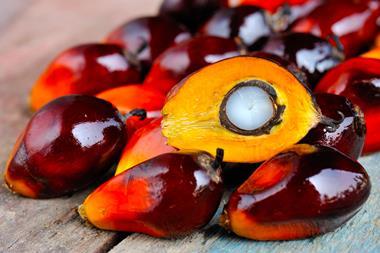
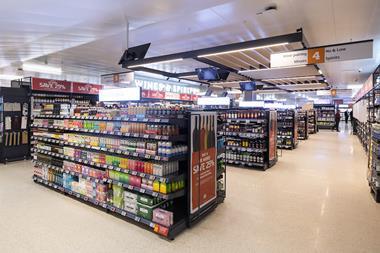
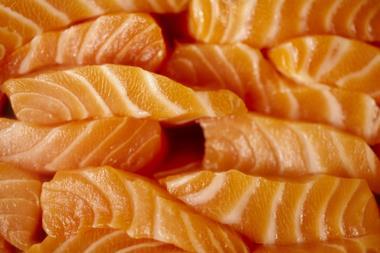
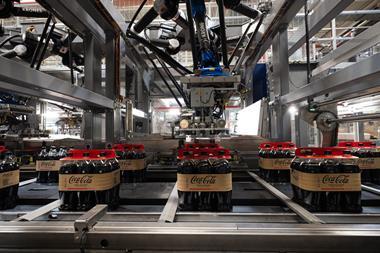
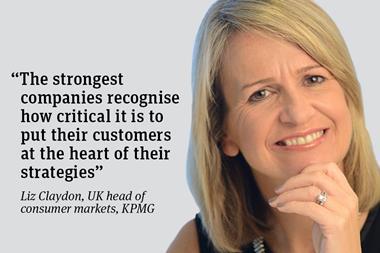



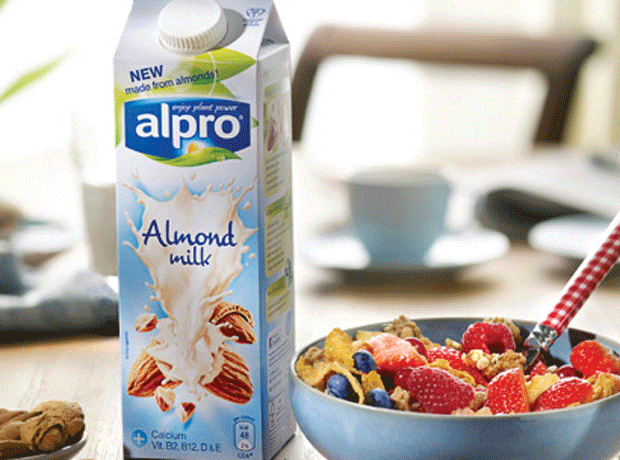
No comments yet